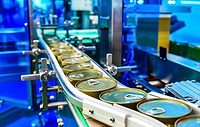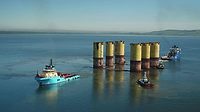Solar Glass Coatings Enhance Electricity Production

In recent years, the United States has increased the use of solar and wind power for electricity production. The increase is due to various factors including ease of installation and maintenance, as well as affordability. Solar and wind prices decreased 89% and 70%, respectively, between 2009 and 2019, according to investment bank Lazard’s annual cost of energy report. Per the Solar Energy Industries Association, by 2030, approximately 1 in 7 homes will have solar panels installed on their rooftop.
The U.S. Department of Energy claims that preserving your panels' surface with a glass coating can boost the photoelectric effect by up to 3-6%. The market for glass coatings will be worth USD 5.26 billion, growing at a 11.92% CAGR during 2021-2030.
Solar panels will ultimately get dirty if they are left outside; dust, sand, pollen, and other particles accumulate. The glass coating, along with a ceramic coating created for solar panels, prevents the solar panel from getting dirty. During cleaning, and on windy and rainy days, the ceramic covering makes it harder for debris to remain on the surface.
The hydrophobic qualities of a ceramic coating increase solar panel efficiency. When water touches the panel, it beads right away, dragging away debris. Additionally, water spots, which can reduce efficiency, are less likely to form on the panels when it rains. This self-cleaning capability will also reduce the amount of time needed to clean and maintain the panel surface.
The Role of Geography in the Production of Solar Energy
Locations with strong and consistent sunlight can increase the efficiency of solar panels. The technical and financial performance of solar energy systems depends on insolation levels. Net metering is essential in stimulating the installation of PV systems in houses and businesses.
The amount of solar electricity generated globally increased from 0.4 billion kWh in 1990 to nearly 1.306 billion kWh in 2021, according to EIA's International Energy Statistics. In 2021, China (33%), America (16%), Japan (9%), India (6%), and Germany (5%) were the top five producers of solar electricity.
Innovation in Solar Glass Coatings
SunDensity provides advanced photonic smart coatings that improve the optical process. To reduce energy waste in solar cells, the SunDensity coating is used on the solar glass' cell-facing side to split high-electronvolt (eV) photons into a number of lower-eV photons.
Anti-reflective (AR) coatings are another option and can reduce reflectivity and soiling, and increase the amount of photons entering a solar cell.
SunDensity's photonic smart coating transforms blue light, which solar panels cannot absorb, into red light, which can be easily converted into power. The photonic coating, which is used underneath the glass in solar panels, can raise panel efficiency, allowing even the most-effective solar cells to produce power at a rate of 20% more than before. SunDensity's photonic smart coating uses a unique technique to capture and modify light, enabling producers to apply this solar coating using commonly accessible magnetron sputtering equipment utilized in the architectural glass sector.
The photonic coating increases solar cell efficiency by 4% to 5% on an absolute basis, which means that a state-of-the-art panel that now operates at 22% efficiency will increase to 26-27% efficiency upon applying the coating.
This increased efficiency allows for more solar generation on rooftops and in urban areas with limited space. Additionally, photonic coatings increase the durability of solar panels and reduce annual degradation factors by converting harmful, high-radiation blue photons to less-harmful red photons.
Regulation and Future of Solar Glass
Solar glass technology uses a photovoltaic layer that converts solar energy into electricity, while maintaining transparency.
The market demand for solar glass will expand rapidly due to the rise in solar installations worldwide and the growing push for green buildings, especially when supported by government programs and incentives.
In China, six solar companies requested fewer restrictions on the expansion of glass production from the government. Per the Ministry of Industry & Information Technology, the Chinese government is considering relaxing the restriction on current investments in new PV-glass production capacity.
Looking for a reprint of this article?
From high-res PDFs to custom plaques, order your copy today!






